James White - Shingles That Withstand Impact - PODCAST TRANSCRIPT
June 11, 2025 at 9:00 a.m.Editor's note: The following is the transcript of a live interview with James White of CertainTeed. You can read the interview below or listen to the podcast.
Intro: Welcome to Roofing Road Trips, the podcast that takes you on a thrilling journey across the world of roofing. From fascinating interviews with roofing experts to on-the-road adventures, we'll uncover the stories, innovations and challenges that shape the rooftops over our heads. So fasten your seatbelts and join us as we embark on this exciting roofing road trip.
Heidi Ellsworth: Hello and welcome to Roofing Road Trips from Roofer's Coffee Shop. My name is Heidi Ellsworth and we are here to talk about, I tell you what, what everyone's talking about, the weather and the impact, not just the impact of weather on us, but the impact to the roof. And so we have our experts from CertainTeed here to talk about this today. I am so happy to welcome back to the show James White. James, welcome back.
James White: Hello, Heidi. Great. Thanks for having me. It's a pleasure to be here. I'm looking forward to the conversation.
Heidi Ellsworth: I know. I really kind of love this conversation. I think it's so important for our industry and everything that you're doing. But let's start out with some introductions. So if you could introduce yourself, tell us what you do with CertainTeed.
James White: Sure. So again, my name is James White. I am a senior product manager at CertainTeed on the residential roofing side. Now my area of focus is the PMA portfolio, so the impact resistant portfolio, so it lends well to this conversation. I've been with CertainTeed for about 10 years in various capacities in both insulation and residential roofing. And I've been with Saint-Gobain, our parent company, for a little over 25 years. And again, starting in manufacturing, did sales for a number of years in Texas, did product management in New York, and then I ended up here. So that's about 28 years in a nutshell right there.
Heidi Ellsworth: I love it. Wow, that's cool. Really, you being in Texas, you see some extreme weather. And with everything that CertainTeed is doing around impact resistance, I mean, you're kind of... Before we get down to really talk about shingles, let's talk just a little bit about extreme weather and what we're seeing over the last couple years that is really changing how the types and the products on the roof and what we need, especially in areas like Texas, the hail belt, Colorado.
James White: Absolutely. Yeah. You didn't bury the lead there. You can't have a conversation these days about roofing without talking about the weather. And certainly with my portfolio, it dominates the talks every single day.
You talked about extreme weather, and the phrase that we most often use on our side is SCS. It's a bit of an umbrella term and it catches a number of hazards, not the least of which are tornadic and straight-line winds and significant hailstorms. And again, if you look at the data, insurance companies have seen significant losses these past few years in the tens of billions of dollars. And a large majority of that damage is coming from hailstorms.
The storms are not only becoming more frequent, but they're more severe. And again, people are coming to us as manufacturers and saying, "Hey, how can we sort of mitigate these losses in this damage and do it in a costly or an affordable manner?"
Heidi Ellsworth: Way. Yeah. Well, when you think about impact, I know when I first started out in this industry, James, I was kind of like, "What? I'm from the West Coast. We don't have impact. We don't have hail." But that's not the case anymore. Whether it's hail or it's flying debris, when you're talking about tornadoes or you're talking about straight line winds, there is a lot of branches, everything you can imagine that's flying. So the roof to be able to handle the impact that's created by the SCS, I love that, these severe storms, how are you looking at that really from in that big picture of all the things that are really impacting the roof?
James White: Yeah. You make a good point where at one point where it was a regionalized phenomenon, it's really growing. And even when you look at the storm season, you could pretty well predict a storm season or a hail season was from April or May through September. And now you look on the news and people are getting damaging hail in Christmastime. It's wild. We saw some incredible footage out of Missouri last week, which is very early in the season.
So it's not only becoming more frequent, but the calendar of it is spreading and also the width of the storms is spreading. So all the way out to Colorado, Utah, you see some incredible hail storms, and now we're starting to see more moving east, like Indiana, Ohio, even western Pennsylvania. It's becoming a real problem for everyone, so we all need to be aware of how to mitigate.
Heidi Ellsworth: Exactly. And that's really what it is. It's about mitigating risk. But extreme weather is not just now. It's been... When I first came into the industry, my first storm was Hurricane Andrew that brought all the Dade things. I know I'm dating myself there a little bit. But we've seen a lot of history. So I would love some of your... What is the history and kind of the evolution of the creation of impact resistant shingles?
James White: Yeah, and I would ask, "How far do you want to go back?" I could argue that the first impact resistant shingles were probably clay tiles, which would have a history back to 10,000 B.C. I don't know what the weather was like back then. But as far as the evolution of impact resistant shingles in the US, you saw your standard felt shingles. Then we moved into a fiberglass core shingle in the late '60s, and then we started to utilize some of that fiberglass technology to make the shingle more robust. Essentially, when you're making a, quote-unquote, "impact resistant shingle," you're trying to prevent cracking and ultimately prevent water intrusion, which is the great damage multiplier.
So like I said, we saw asphalt with fiberglass, we saw scrim backed, and now the next evolution, if you will, is a polymer-modified asphalt shingle pioneered in the late '90s, early 2000s. And it's really picking up steam. We had our first polymer-modified asphalt shingle about 2015. And I really think it's the future as far as impact resistant shingles go, in building a more resilient roof cover. It's priced appropriately, it's incredibly durable. And again, what you're really trying to do is just minimize disruption for these homeowners. And that's what using a class four impact shingle is allowing you to do.
Heidi Ellsworth: 100%. Well, for those roofing nerds out there, let's talk a little bit about the polymers. When you say polymer, what kind of polymers are enhancing those impact resistant shingles and how do they compare to really your more traditional?
James White: Yeah, great question. So the polymer most often seen in the industry is called SBS, styrene butadiene styrene. It's a synthetic polymer. When you think synthetic polymers, nylon, Teflon, polyethylenes, plastics, things of that nature, not terribly unlike that. I would say most if not all roofing manufacturers lean on an SBS or SBS derivative to integrate that into their oxidized shingle.
So what we do is we blend it at a molecular level. And so we have one part PMA, polymer-modified asphalt with SBS, and one part standard oxidized asphalt in a proprietary ratio. And ultimately it creates a shingle, a product, that's more impact resistant, more durable and more cold weather resilient than any standard oxidized asphalt on the market.
Heidi Ellsworth: When you really think about it and the technology, the innovation that is going into that, to really between the fiberglass and the asphalt and then really with the asphalt, it's making such a difference as we look at that. And so as you think about that, I would love for you to share and talk about that strength that's created between those elements, the modified asphalt, the fiberglass, and really how's that making a huge difference and how can contractors talk about that?
James White: Yeah, and there's two different perspectives. When I often talk to folks in the field, be it homeowners or contractors, there's two different perspectives that I speak to. From the contractors' angle, I think first and foremost, contractors like working with us because we go to the market with a tiered approach. We do have a good, better, best, a regionally based good here, better here, best. It depends on the region. You might want a luxury shingle in the Northeast, you might want a NorthGate or a ClimateFlex shingle in Minnesota or Texas. So they really appreciate that about what we offer.
And again, when we talk to contractors... Again, you're talking about the impact resistance so it's something that they can share with the homeowners. It's more resilient, but it also, it's easier for them to install. It's very malleable. The rubberizing content makes it a lot more workable. So when you get down into cold weather, when you're at the shoulders of your typical roofing season, when the weather drops below 50, you can still get up there and install shingles and do it in an efficient manner because you can still work it, get it into those valleys, cut it easily, which you can't necessarily do under conditions where a standard oxidized shingle is going to get brittle and perhaps break. So that's a big selling point.
And again, with a Class 4 shingle, there's in many states in growing, there are insurance benefits associated with that. So it's great. And that's again, something we share with the homeowners. Life of the shingle is critically important as well. With the polymer-modified asphalt, there's an element to that where the granular retention is greater than the standard oxidized asphalt shingle. One of the mortal enemies of an asphalt shingle is UV rays and the granules are there to reflect and prevent the UV rays from causing the asphalt to become brittle and crack. So that's another benefit. It's not just impact resistance and durability, it's also adding to the length of the life of your house.
Heidi Ellsworth: Yeah. I would love, just for anyone out there who's listening to this who maybe doesn't have quite as much experience, or maybe you're just getting into roofing or is in a part of the country that hasn't really had to worry about impact resistance, about Class 4. How does a shingle, how does it get tested for Class 4?
James White: There's a couple different third party testing agencies out there. The one that I think most are most familiar with is UL 2218. They do a number of tests, Class 3, Class 4. But the 2218 Class 4 test is dropping a two-inch steel ball from 20 feet onto a designated part of the roof deck. And that is to mimic a potentially worst case scenario impact from a hailstone. Living in Texas, you've seen softball-sized hail, and it's wild. So they think with the weight and velocity and structure of the steel ball, it very closely mimics what you see in nature, and it's a very repeatable test. So at that point, they're looking for cracks. And that's the challenge in the field is that you could have a hailstorm. You could look at your roof and it looks perfectly fine, and perhaps to the untrained eye it does, but you might have a crack on the backside of a shingle that you would never know if you weren't looking for it.
And again, that leads to damage to the shingle and ultimately water intrusion, which is the great multiplier as far as damage in your home. So that's the big one, UL 2218 Class 4. FM 4473 is a little bit different. They use an ice ball, so they fire an ice ball at a roof deck and then measure from there. And then the third one that's becoming very popular is IBHS. Down in South Carolina, they have their own proprietary ice ball tests and they have their own proprietary ice balls. They're not just frozen in the freezer like you and I would do. They inject certain elements into it to make it mimic what you see in nature. They fire it at the shingle deck and they do a thorough analysis. They look for dents, they look for ridges, they look for granule loss and cracks and tears. So it's a very thorough look and a very realistic look at what happens in nature. It's interesting.
Heidi Ellsworth: And the difference between getting a Class 3 compared to a Class 4 rating is really just the extreme of the test, the size of the ball? How does that work?
James White: Yeah, it's the size of the projectile that's used in the test essentially. They're held to different standards. Similar inspection, but they're held to slightly different standards and slightly different size projectile.
Heidi Ellsworth: Yeah. So knowing that this extreme weather is hitting everywhere across the country and really having all your work, all your great work with the impact-resistant shingles, how should contractors really be approaching homeowners on their recommendation on using impact-resistant shingles and making that leap of, "Look, this could help you not have the inconvenience the next time there's a hail storm?"
James White: Yeah, it's a great question. It's one I ask contractors a lot. I say, "Why do you lead with an impact resistant-shingle, and candidly, a shingle that's probably going to last a lot longer than the cheapest option out there?" First and foremost, they want to differentiate themselves from their competition. A lot of our better contractors do go to the homeowners with a good, better, best tiering and give them the options.
I think it's important for contractors to be in a position to educate the homeowners. And when I say that, things like insurance benefits and what's available in your area. And again, I know when I had my roof replaced prior to my life in the building materials business, I didn't know anything and whatever the roofer told me was gospel. So if they are able to educate the homeowner, obviously the features, the benefits, the impact resistance, durability, long-lasting nature of it, that's one thing. But also the intangibles, like the insurance discounts and things on the backside because you hear that so much, you hear stories about insurance all day every day. And it's a question of, one, availability and, two, affordability. Everybody is feeling the brunt of it, not just folks in Florida, Louisiana, California. We're all seeing that reflected in our premiums. So if they could understand that piece of it, I think they'd really bring a lot of value to the homeowner.
Heidi Ellsworth: Yeah, because if you can get discounts on your homeowner's policy, that's huge. And I think a lot of times people don't always think about the inconvenience and sorry, nothing out there for amazing roofing contractors, but there is an inconvenience that goes on when you are trying to really shut your house down, make sure everything's in the right spot, re-roof. So getting the right product for the elements for where you're at, for your environment, I think is so important.
James White: If I was to just break this down to its simplest core tenet, the reason to go with an impact-resistant shingle is to just minimize disruption in your life. And like you said, God bless our contractors. We work with some outstanding teams. But you've got to get quotes, you've got to work with your insurance company. You might want to get a couple of quotes. You have to be home at certain times when it's not necessarily convenient. You have a big hole in your roof for a little bit. If you could do anything to avoid that for really a minimal investment up front that you will get back over a couple of years in insurance discounts, I think it's a pretty easy sell to be honest with you.
Heidi Ellsworth: Yeah. And when you really think about it for contractors out there, by bringing the right products, it really grows your business. It's really not like the old days where like, "Well, yeah, every year they're going to get a new roof." The insurance companies are not going to allow that going forward. That part is already changed. And by bringing these kinds of products to the homeowners, really explaining to them, now they're going to talk to their friends, their family, their neighbors. And so it really sets that contractor up, I think, for a lot of additional business by bringing the right products.
James White: Yeah. And to that point, roofing, much like a lot of trades, it's very much driven on word of mouth and referral, somebody you play softball with or go to church with. It's somebody that you know that recommended somebody that you typically go with. And so if you make sure that homeowner has a good experience then that's your best calling card moving forward.
Heidi Ellsworth: Always, always. Okay. Let's talk a little bit about the different impact-resistant shingles you have at CertainTeed. Because you don't have just one, I know you have a lot. So can you walk us through the different impact resistant shingles and where they fit?
James White: Yes. We have two different tiers. We have a luxury portfolio with Belmont and Prez. One has more of that slate look, one has more of that shake look, which is fantastic, great seller, especially in the north central part of the US. It's appropriate for the right home. You have to have the right aesthetic, I would say.
But really the growth engine for our impact-resistant portfolio are our Landmark ClimateFlex products and our Northgate ClimateFlex products, both of which use the polymer-modified asphalt technology that we highlighted earlier. There's a place for each of them. The Northgate ClimateFlex is our top tier, a little bit more robust, a little bit heavier weight product. We have what's called a max-def color blend with the Northgate. So again, a little bit vibrant, a little bit more vibrant colors, they really pop. And for the right homeowner who's looking for the best of the best, I can't recommend the Northgate ClimateFlex product enough. And then if you're looking for something maybe one step up from a Landmark or a Landmark Pro, then a Northgate or a Landmark ClimateFlex is an outstanding choice as well.
Heidi Ellsworth: Beautiful. I love the profiles. You have some of the most beautiful designer shingles out there.
James White: Thank you.
Heidi Ellsworth: And the architectural style, obviously. On both of those brands, you are using the word ClimateFlex, which is really the technology behind this. Can you talk just a little bit about that, why and how people should be looking for that ClimateFlex in the name?
James White: Yeah. And I'm glad you pointed that out because it took a while to gain traction. But yes, ClimateFlex is the technology. Climateflex is the channel by which we use the SBS products through the polymer-modified asphalt integration. It's an umbrella under which the Landmark ClimateFlex, the Northgate ClimateFlex products sit. And we're looking to expand always. We're always looking to understand where there's more and new appropriate markets. And we certainly think there's a lot of opportunity to inject that technology into both existing products and new products that we're developing currently.
Heidi Ellsworth: Yeah. For the contractors out there, when you talk to your homeowners, really talking about the technology behind the shingles, I think, is important. So a lot of times we just talk about the shingles and the homeowner, they get a roof once or twice in their lifetime. They really need to understand the technology that is going behind it that is creating the impact resistance.
James White: Absolutely. Absolutely. That comes down to a number of things. That comes down to our own marketing efforts. That comes down to the incredible network of territory managers that we have who are very well-versed in all of the products that we sell. And it comes down to the contractor being our advocate. It's very important for us to have contractors that are partners and really appreciate what we bring the table, and they convey that pride to the homeowners. So again, we've got some fantastic contractors and sales folks out there, and if you ever have any questions, they're easy to find, but I can help you if not.
Heidi Ellsworth: They're easy to find. Now, one of the things, just as contractors are thinking about, "Okay, I want to get this product. I want to really start talking to my homeowners about it," training. I know with this product, it can be put on a lot later, it can be put on earlier just because of the temperatures. Is there any other special training that needs to go on, or is this pretty much once you've got it down, you're good?
James White: No, once you've got it down, you're good. The shape of the Landmark ClimateFlex and Northgate ClimateFlex is something that these folks have been working with, so there's nothing new or proprietary to installing it. And like you said, once you've got it down, once you've done one or two of these roofs, you can bang them out in no time. There's certainly no additional time that's needed for a ClimateFlex roof.
Heidi Ellsworth: And they can roof later in the season and earlier in the season.
James White: Yeah. And when I talk to contractors about it, it's more about stretching their revenue. You know what I mean? If you can squeeze out half a dozen, a dozen more jobs in the beginning or the end of the season, that means more money in your pocket. That means less time trying to retain your guys, which frankly is a challenge in this industry.
It really stands to show that there's a lot of benefits here. And to that point, we recently did a trial at the Home Innovation Research Lab down in Maryland, just trying to understand. We get a lot of questions about cold weather installation and how well it works, and we really wanted to understand it better from a scientific perspective, what temperatures you can go down to. So we went down, we dropped the temperature down in one of their research labs to 35, 40 degrees, and we got in there and we had half a dozen crews in there installing shingles for two days and then giving us feedback and really fortifying and adding credence to the claims that this is really a great product, even when the temperature drops down to those freezing temperatures.
Heidi Ellsworth: Well, and when you think about what we started out with talking about extreme weather and the fact that we are getting storms so much earlier in the year, so much later in the year, it just doesn't matter. That ability to be able to install at weird times of the year within the right temperatures is a real benefit because you're going to be able to get out there and get in front of those homeowners as soon as the storm hits with the right product and you'll be able to install it right away.
James White: Yeah. Yep. The less time you have a blue tarp on your roof, the better for everybody. That's for sure.
Heidi Ellsworth: We know that. Man. Okay, James, how do contractors, because after this podcast, they're going to be like, "Come on in." How do they get in touch with... How do they get started in providing this and also be becoming a part of the CertainTeed contractor family?
James White: So the first answer is certainly going to CertainTeed.com. There's a wealth of information and directions on there. Again, we have an incredible, incredible network of territory managers located throughout the US and Canada that are more than happy to help you. We have a customer service line, you can find it on our website. You can call them, again, team and customer service, and they'll point you in the right direction.
And in addition to that, we have what we call our business building workshops that we've been conducting. We are trying to build more customer intimacy and even contractor intimacy. And so what we're doing is we're renting out professional stadiums, both baseball and football, bringing in about 300, 400 contractors from those local areas and just offering them trainings. It could be anything from product attributes to proper installation techniques, and even things like social media and marketing and how to capitalize on trends to help grow your sales. We do it in English and Spanish, and it's really been a roaring success.
This is our second season now, and we're going to be in Minnesota here in a couple of weeks and back down to Arlington, Texas at the end of April. And it's been a great experience, a great opportunity to get in front of as many contractors as you can in a short period of time. I'm sure it's valuable to them, and it's incredibly valuable to us as well with the feedback we get.
Heidi Ellsworth: And there's the answer to the training question. You're providing it all the time, not only locally with your local reps, but with these great events to be able to not just train on installation, but on business and on everything else. And I love the fact that it's English and Spanish.
James White: Yeah, and if you need more on-the-job training, we have what we call our CertainTeed Mobile Training Vehicles. We've got 10 of them distributed throughout the US. So if you have a Prez job that your team's not terribly familiar with, you can have us come out. We'll bring the truck, we'll do a demo, we'll say, "This is what's different about it. This is what's unique about a Prez job, and this is how you lay it out," and free of charge. We're just happy to work with our contractors. And again, incredibly well received. I wish we had a hundred of these guys because everyone raves about the value that they offer. So it's been great.
Heidi Ellsworth: I love it. I love it. James, thank you so much. This has been so informational and so timely.
James White: Absolutely.
Heidi Ellsworth: Right now, we're going into the spring season and we know these storms are hitting.
James White: Yes, ma'am. Yes, ma'am. I appreciate your time. This has been great.
Heidi Ellsworth: Thank you as always. Thank you so much. We'll have you back again. So for everyone out there, please check out the CertainTeed Residential Directory on RoofersCoffeeShop. You can get all this information, see where the events are going to be happening, and of course, information on impact resistant shingles. Be sure to check out all of our podcasts under the Read Listen Watch navigation under Roofing Road trips. Be sure on your podcast channel to subscribe and set those notifications so you don't miss a single episode. We'll be seeing you next time on Roofing Road Trips.
Outro: If you've enjoyed the ride, don't forget to hit that subscribe button and join us on every roofing adventure. Make sure to visit RoofersCoffeeShop.com to learn more. Thanks for tuning in, and we'll catch you on the next Roofing Road Trip.



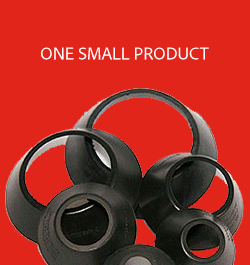
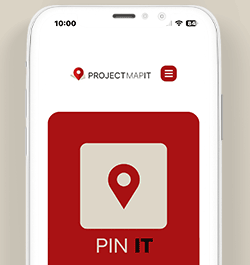





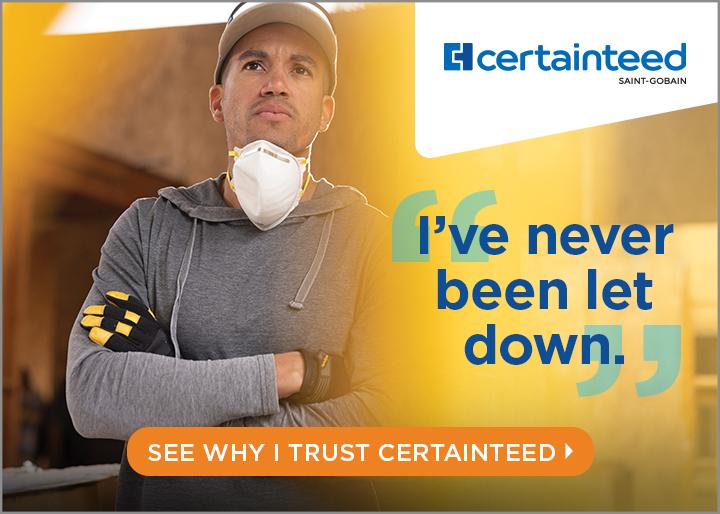
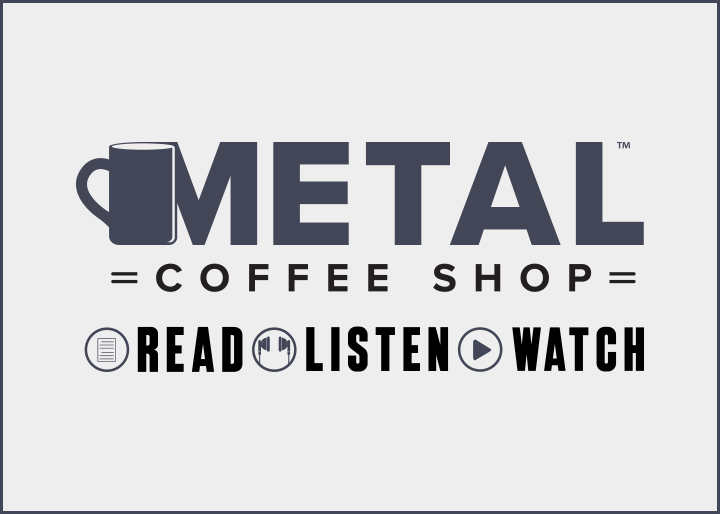

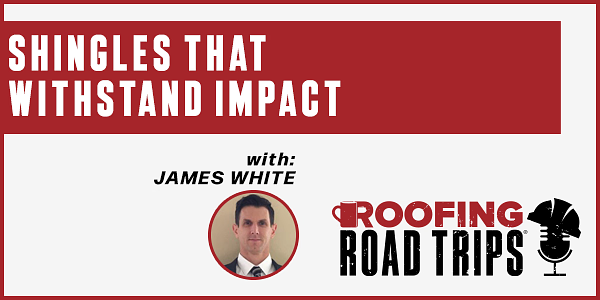
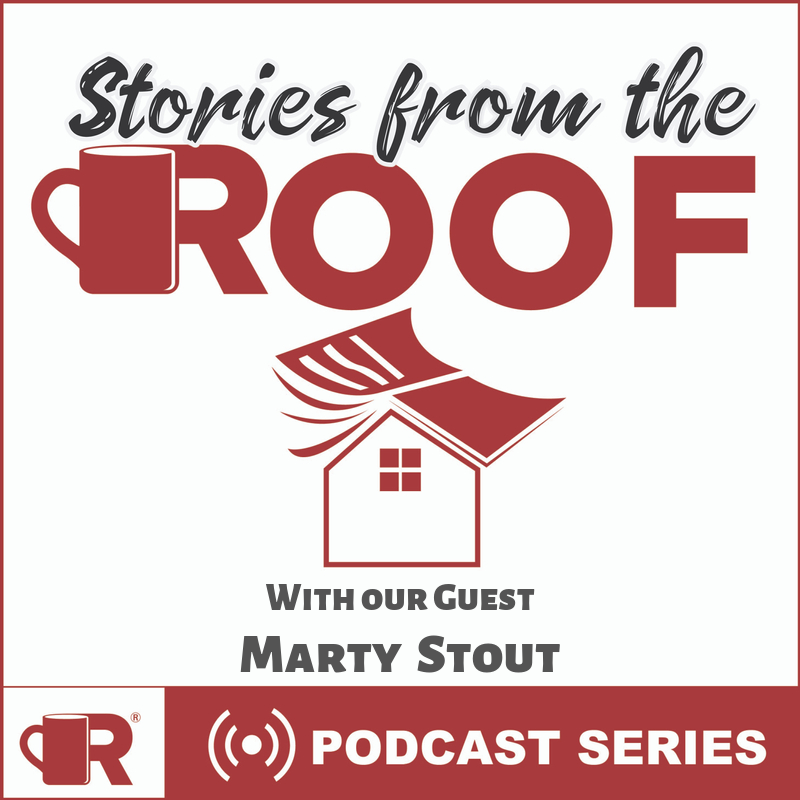
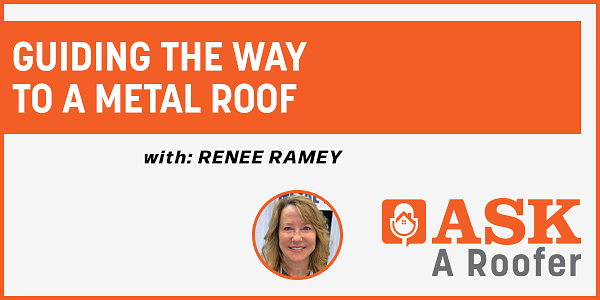
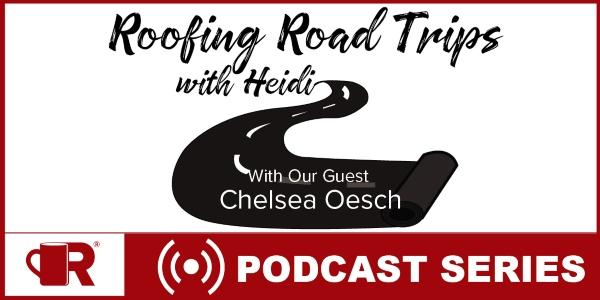

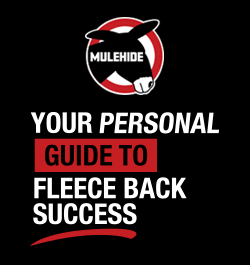

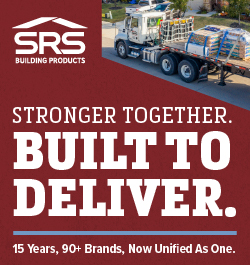


Comments
Leave a Reply
Have an account? Login to leave a comment!
Sign In